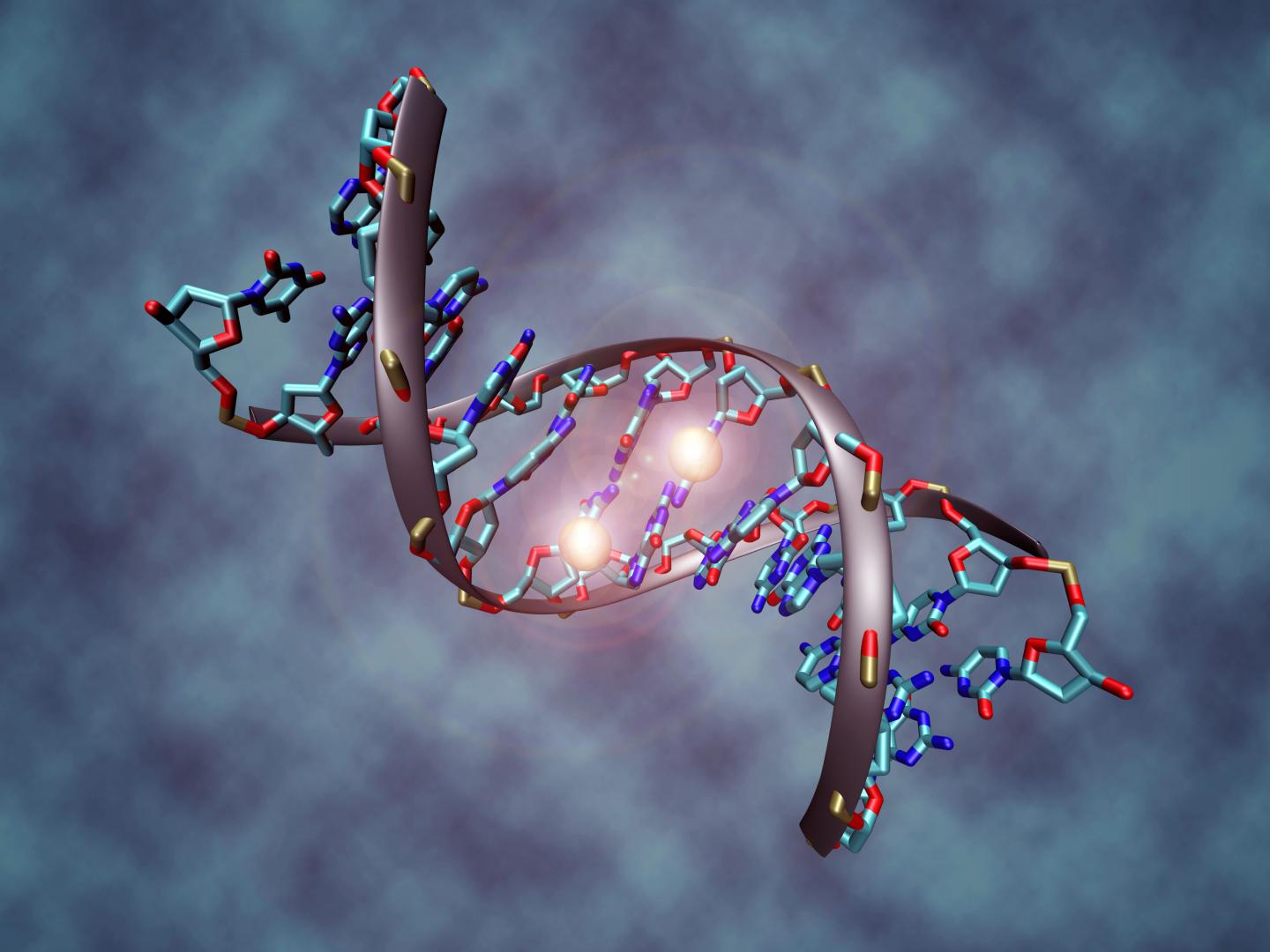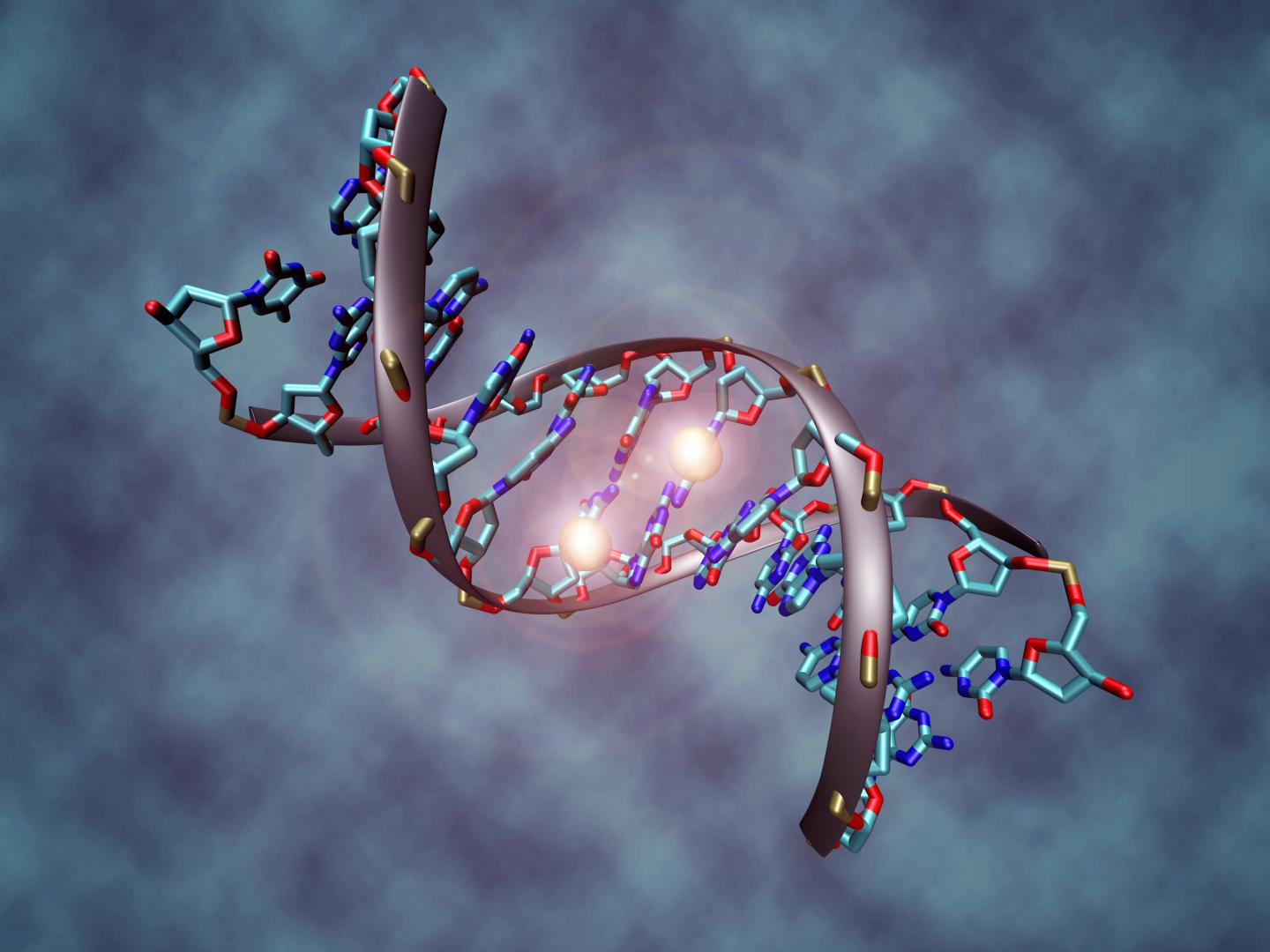
Credit: Christoph Bock/CeMM
Scientists have established comprehensive maps of the human epigenome, shedding light on how the body regulates which genes are active in which cells. Over the last five years, a worldwide consortium of scientists has established epigenetic maps of 2,100 cell types. Within this coordinated effort, the CeMM Research Center for Molecular Medicine contributed detailed DNA methylation maps of the developing blood, opening up new perspectives for the understanding and treatment of leukemia and immune diseases.
One of the great mysteries in biology is how the many different cell types that make up our bodies are derived from a single cell and from one DNA sequence, or genome. We have learned a lot from studying the human genome, but have only partially unveiled the processes underlying cell determination. The identity of each cell type is largely defined by an instructive layer of molecular annotations on top of the genome – the epigenome – which acts as a blueprint unique to each cell type and developmental stage.
Unlike the genome the epigenome changes as cells develop and in response to changes in the environment. Defects in the factors that read, write, and erase the epigenetic blueprint are involved in many diseases. The comprehensive analysis of the epigenomes of healthy and abnormal cells will facilitate new ways to diagnose and treat various diseases, and ultimately lead to improved health outcomes.
A collection of 41 coordinated papers now published by scientists from across the International Human Epigenome Consortium (IHEC) sheds light on these processes, taking global research in the field of epigenomics a major step forward. These papers represent the most recent work of IHEC member projects from Canada, the European Union, Germany, Japan, Singapore, South Korea, and the United States. Three of these papers have been coordinated by Christoph Bock at CeMM.
The latest study from Christoph Bock's team, published today in the journal Cell Stem Cell, charts the epigenetic landscape of DNA methylation in human blood. Led by CeMM scientists Matthias Farlik and Florian Halbritter together with Fabian Müller from Max Plank Institute for Informatics, this study highlights the dynamic nature of the epigenome in the development of human blood.
Our body produces billions of blood cells every day, which develop from a few thousand stem cells at the top of a complex hierarchy of blood cells. Using the latest sequencing and epigenome mapping technology, Bock's team now unraveled a blueprint of blood development that is encoded in the DNA methylation patterns of blood stem cells and their differentiating progeny.
This success was made possible by close international cooperation of European scientists: Blood donations of British volunteers were sorted by cell type by the team of Mattia Frontini at the University of Cambridge. These samples were shipped to Austria, where CeMM scientists performed the epigenome mapping. All data were then processed in Germany at the Max Plank Institute for Informatics and jointly analyzed by scientists at CeMM and at the Max Plank Institute for Informatics.
The result of the combined effort of Bock's team and many other members of IHEC is a detailed map of the human epigenome, similar to a three-dimensional mountain landscape: The stem cells reside on the mountain top, with valleys of cellular differentiation descending in many directions. As the cells differentiate, they pick one of several epigenetically defined routes and follow it downhill, eventually arriving at one specific valley, corresponding to a specialized cell type. Cells cannot easily escape these valleys, which provides robustness and protection against diseases such cancer.
Two other studies by Christoph Bock's team were published earlier this year and showcase how researchers are seeking to utilize epigenetic information for medicine. For instance, certain routes of differentiation are jammed in leukemia, such that cells can no longer reach their destination and take wrong turns instead. Surveillance of those cells by epigenetic tests can contribute to a more precise diagnosis of leukemia – clinical tests of this approach are ongoing.
„The epigenetic map of the human blood helps us understand how leukemia develops and which cells drive the disease" says Christoph Bock. This is relevant to cancer diagnostics and personalized medicine, and it provides a compass for future efforts aiming to reprogram the epigenome of individual cells, for example by erasing critical epigenetic alterations from leukemia cells.
"The collection of manuscripts released by IHEC impressively demonstrates how epigenetic information and analyses can help find answers to pressing questions related to the cellular mechanisms associated with complex human diseases", said Professor Hendrik (Henk) Stunnenberg from Radboud University, The Netherlands, former Chair of the IHEC International Scientific Steering Committee and coordinator of the EU-funded BLUEPRINT project.
###
The Study "DNA Methylation Dynamics of Human Hematopoietic Stem Cell Differentiation" is published on 17 November 2016 in Cell Stem Cell, DOI:10.1016/j.stem.2016.10.019
Authors: Matthias Farlik, Florian Halbritter, Fabian Müller, Fizzah A. Choudry, Peter Ebert, Johanna Klughammer, Samantha Farrow, Antonella Santoro, Valerio Ciaurro, Anthony Mathur, Rakesh Uppal, Hendrik G. Stunnenberg, Willem H. Ouwehand, Elisa Laurenti, Thomas Lengauer, Mattia Frontini, and Christoph Bock
Funding: This study was partly funded by the BLUEPRINT Project of the European Union.
Christoph Bock is a Principal Investigator at CeMM. Trained as a bioinformatician, he leads a team that integrates biology, medicine, and computer science – working on a vision of precision medicine that is driven by large datasets and a deep understanding of disease mechanisms. He is also a guest professor at the Medical University of Vienna's Department for Laboratory Medicine, and he coordinates the genome sequencing activities of CeMM and the Medical University of Vienna. At CeMM, he co-initiated and leads Genom Austria, the Austrian contribution to the International Network of Personal Genome Projects, and he is a principal investigator in the BLUEPRINT project and the International Human Epigenome Consortium.
http://epigenomics.cemm.oeaw.ac.at/
About CeMM
CeMM Research Center for Molecular Medicine of the Austrian Academy of Sciences is an interdisciplinary research institute committed to advancing the understanding of human diseases through basic and biomedical research. Located at the center of the Medical University of Vienna's campus, CeMM fosters a highly collaborative and interactive research mindset. Focusing on medically relevant questions, CeMM researchers concentrate on human biology and diseases like cancer and inflammation/immune disorders. In support of scientific pursuits and medical needs, CeMM provides access to cutting-edge technologies and has established a strategic interest in personalized medicine. Since 2005, Giulio Superti-Furga is the Scientific Director of CeMM.
http://www.cemm.at
About BLUEPRINT
The project BLUEPRINT – A BLUEPRINT of Haematopoietic Epigenomes is a large-scale research project receiving close to 30 million Euro funding from the EU. 42 leading European universities, research institutes and industry entrepreneurs participate in what is one of the two first so-called high impact research initiatives to receive funding from the EU. For more information, please visit:
About IHEC
The International Human Epigenome Consortium (IHEC) is a global consortium with the primary goal of providing free access to high-resolution reference human epigenome maps for normal and disease cell types to the research community. IHEC members support related projects to improve epigenomic technologies, investigate epigenetic regulation in disease processes, and explore broader gene-environment interactions in human health. Current full members of IHEC include: AMED-CREST/IHEC Team Japan; DLR-PT for BMBF German Epigenome Programme DEEP; CIHR Canadian Epigenetics Environment, and Health Research Consortium (CEEHRC); European Union FP7 BLUEPRINT Project; Hong Kong Epigenomics Project; KNIH Korea Epigenome Project; the NIH/NHGRI ENCODE Project; the NIH Roadmap Epigenomics Program; and the Singapore Epigenome Project. For more information, please visit:
http://ihec-epigenomes.org/
For further information please contact
Mag. Wolfgang Däuble
Media Relations Manager
CeMM
Research Center for Molecular Medicine of the Austrian Academy of Sciences
Lazarettgasse 14, AKH BT 25.3
1090 Vienna, Austria
Phone +43-1/40160-70 057
Fax +43-1/40160-970 000
[email protected]
http://www.cemm.at
Media Contact
Wolfgang Däuble
[email protected]
43-140-160-70057
@CeMM_News
http://www.cemm.oeaw.ac.at
############
Story Source: Materials provided by Scienmag




